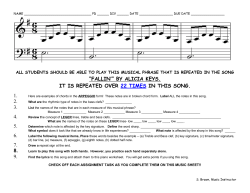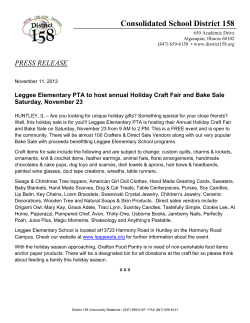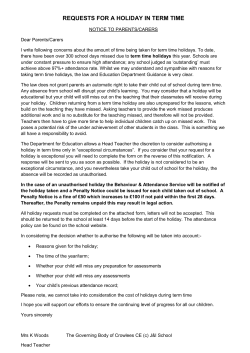
1 Billie Holiday / “Strange Fruit” / 1939 “Black bodies swinging in the
“Black bodies swinging in the Southern breeze” 1 Billie Holiday / “Strange Fruit” / 1939 The Birth of the Popular Protest Song It is a clear, fresh New York night in March 1939. Over in Europe, the Spanish Civil War is about to end in victory for General Franco’s Nationalists; by the end of the month, British prime minister Neville Chamberlain will have officially abandoned his policy of appeasement towards Hitler’s Germany. In the United States, John Steinbeck’s The Grapes of Wrath, an epic tale of sharecroppers during the Great Depression, is on its way to the printers and will end up being the biggest-selling novel of the year. A movie of Margaret Mitchell’s best seller Gone with the Wind is due to reach cinemas in the summer. The black opera singer Marian Anderson has recently been denied permission by the Daughters of the American Revolution to sing for an integrated audience in Washington, DC’s Constitution Hall, prompting First Lady Eleanor Roosevelt to resign from the DAR in disgust and put her weight behind finding a new venue for Anderson’s Easter recital. 3 From “33 Revolutions Per Minute,” by Dorian Lynskey. Excerpt courtesy of Ecco. 33rpm_i_xvi_1_664_F.indd 3 4/20/11 4:12 PM You’re on a date and you’ve decided to investigate a new club in a former speakeasy on West Fourth Street: Café Society, which calls itself “The Wrong Place for the Right P eople.” Even if you don’t get the gag on the way in— the doormen wear tattered clothes—then the penny drops when you enter the L-shaped, two-hundred-person-capacity basement and see the satirical murals spoofing Manhattan’s high-society swells. Unusually for a New York nightclub, black patrons are not just welcomed but privileged with the best seats in the house. You’ve heard the buzz about the resident singer, a twenty-three-year-old black woman called Billie Holiday who made her name up in Harlem with Count Basie’s band. She has golden brown, almost Polynesian skin, a ripe figure (Time magazine will soon condescendingly note, “She does not care enough about her figure to watch her diet, but she loves to sing”), and a single gardenia in her hair. She has a way of owning the room, but she’s not flashy. Her voice is plump and pleasure seeking, prodding and caressing a song until it yields more delights than its author had intended, bringing a spark of vivacity and a measure of cool to even the hokier material. There are many fine singers in New York in 1939, but it’s the quicksilver spirit which lies behind Holiday’s voice, beyond mere timbre and technique, that keeps you gripped. And then it happens. The house lights go down, leaving Holiday illuminated by the hard, white beam of a single spotlight. Suddenly you can’t get a drink because the waiters have withdrawn to the back of the room. She begins her final number. “Southern trees bear a strange fruit.” This, you think, isn’t your usual lovey-dovey stuff. “Blood on the leaves and blood at the root.” What is this? “Black bodies swinging in the Southern breeze.” Lynching? It’s a song about lynching? The chatter from the tables dries up. Every eye in the room is on the singer, every ear on the song. After the last word—a long, abruptly severed cry of “crop”—the whole room snaps to black. When the house lights go up, she’s gone. Now ask yourself this: Do you applaud, awed by the courage and inten- sity of the performance, stunned by the grisly poetry of the lyrics, sensing history moving through the room? Or do you shift awkwardly in your seat, shudder at the strange vibrations in the air, and think to yourself: you call 4 1939 –1964 From “33 Revolutions Per Minute,” by Dorian Lynskey. Excerpt courtesy of Ecco. 33rpm_i_xvi_1_664_F.indd 4 4/20/11 4:12 PM this entertainment? This is the question that will throb at the heart of the vexed relationship between politics and pop for decades to come, and this is the first time it has demanded to be asked. Written by a Jewish Communist called Abel Meeropol, “Strange Fruit” was not by any means the first protest song, but it was the first to shoulder an explicit political message into the arena of entertainment. Just prior to this, U.S. protest songs had nothing to do with mainstream popular music. They were designed for specific audiences—picket lines, folk schools, party meetings—with an eye towards specific goals: join the union, fight the bosses, win the strike. “Strange Fruit,” however, did not belong to the many but to one troubled woman. It was not a song to be sung lustily with your comrades during a strike but something profoundly lonely and inhospitable. The music, stealthy, half in shadow, incarnated the horror described in the lyric. And instead of resolving itself into a cathartic call for unity, it hung suspended from that final word. It did not stir the blood; it chilled it. “That is about the ugliest song I have ever heard,” Nina Simone would later marvel. “Ugly in the sense that it is violent and tears at the guts of what white p eople have done to my p eople in this country.” For all these reasons, it was something entirely new. Up to this point, protest songs functioned as propaganda, but “Strange Fruit” proved they could be art. It is a song so good that dozens of singers have since tried to put their stamp on it, and a performance so strong that none of them have come close to outclassing Holiday; in 1999, Time magazine named her first studio version the “song of the century.” It was, and remains, a song to be reckoned with, and the questions it raised in 1939 endure. Does a protest song enliven the politics and the music both, or merely cheapen them? Can its musical merits be separated from its social significance, or does the latter always obscure and distort the former? Does it really have the power to change minds, let alone policies? Does it convey a vital issue to a whole new audience or travesty it by reducing it to a few lines, setting it to a tune, and performing it eople who may or may not give a damn? Is it, fundamentally, a gripping to p and necessary art form or just bad art and lousy entertainment? This is what “Strange Fruit” first asked of its listeners in an L-shaped room in downtown Manhattan in the first few months of 1939—the popular protest song’s ground zero. BILLIE HOLIDAY / “STR ANGE FRUIT” / 1939 5 From “33 Revolutions Per Minute,” by Dorian Lynskey. Excerpt courtesy of Ecco. 33rpm_i_xvi_1_664_F.indd 5 4/20/11 4:12 PM ■ ■ ■ Prior to “Strange Fruit,” the only hit song to deal squarely with race in America was “Black and Blue,” written by Andy Razaf and Fats Waller in 1929 for the musical Hot Chocolates. Sung by Edith Wilson on the opening night, “Black and Blue” wooed the audience with familiar minstrel imagery, then gut punched them with the c ouplet: “I’m white inside, it don’t help my case / ’Cause I can’t hide what is on my face.” When Wilson stopped singing there was a deathly hush, followed by a standing ovation. According to Razaf’s biographer, Barry Singer, that crucial couplet “resolutely fractured the repressed traditions of black entertainment expression in this country forever.” But “Black and Blue” was too sui generis to set a trend for race-conscious show tunes.* To find black protest songs en masse, you had to tour the South, collecting the complaints of blues and folk singers who had never crossed the threshold of a recording studio. That was the mission of Lawrence Gellert, an outspoken left-winger who published some two hundred examples in his 1936 volume, Negro Songs of Protest. Having learned to be cautious in the Jim Crow South, the men who taught them to him did so only on condition of anonymity. The first blues singer to address race head on, and under his own name, was the Louisiana ex-convict Lead Belly, who composed “Bourgeois Blues,” about the discrimination he encountered on a trip to Washington, DC, in 1938. But even if Abel Meeropol was aware of some or all of these examples when he sat down to compose “Strange Fruit,” there was not much they could have taught a white man from New York. Only a black man could have composed a song which explored day-to-day prejudice as keenly as “Bourgeois Blues” or “Black and Blue,” but anybody could see that a bloodthirsty mob hanging someone from a tree was wrong. Although the practice was already on the decline by the time of “Strange Fruit”—the grotesque photograph of a double hanging which moved Meeropol to pick up * Another ahead-of-its-time Broadway curio was Irving Berlin’s “Supper Time,” from the 1933 topical revue As Thousands Cheer, in which a black man “ain’t coming home no more” because he has been lynched, although the lyric is scrupulously vague. 6 1939 –1964 From “33 Revolutions Per Minute,” by Dorian Lynskey. Excerpt courtesy of Ecco. 33rpm_i_xvi_1_664_F.indd 6 4/20/11 4:12 PM his pen had been taken in Indiana in 1930—lynching remained the most vivid symbol of American racism, a stand-in for all the more subtle forms of discrimination affecting the black population. Perhaps only the visceral horror that lynching inspired gave Meeropol the necessary conviction to write a song with no precedent, one which required a new songwriting vocabulary. Meeropol published his poem under the title “Bitter Fruit” in the unionrun New York Teacher in 1937. The later name change was inspired. Bitter is too baldly judgemental. Strange, however, evokes a haunting sense of something out of joint. It puts the listener in the shoes of a curious observer spying the hanging shapes from afar and moving closer towards a sickening realization. Meeropol was a Communist Party member who taught at a high school in the Bronx. In his spare time, under the gentile alias Lewis Allan, he churned out reams of songs, poems, and plays with topical themes, only a handful of which found a wider audience. Meeropol worked out a tune and “Strange Fruit” quickly became a fixture at left-wing gatherings during 1938, sung by his wife and various friends. It even made it to Madison Square Garden, at an antifascist Spanish Civil War fund-raiser, via black singer Laura Duncan. In the crowd was one Robert Gordon, who had recently taken on a job at Café Society, directing the headlining show by Billie Holiday. The club was the brainchild of New Jersey shoe salesman Barney Josephson: a pithy antidote to the snooty, often racist elitism of other New York nightspots. Opening the night before New Year’s Eve 1938, it owed much of its instant success to Holiday. In her twenty-three years, Holiday had already seen plenty, although her notoriously unreliable autobiography, Lady Sings the Blues, obscures as much as it reveals. Born in Philadelphia, she spent some time running errands in a Baltimore whorehouse, “just about the only place where black and white folks could meet in any natural way,” where she first discovered jazz. After she accused a neighbor of attempting to rape her, the ten-year-old Holiday, an incorrigible truant, was sent to a Catholic reform school until her mother secured her release. Moving with her mother to New York, she worked in another brothel, this time doing more than errands, and was jailed for solicitation. Upon her release she began singing in Harlem jazz clubs, where she caught the eye of producer John Hammond, who made her BILLIE HOLIDAY / “STR ANGE FRUIT” / 1939 7 From “33 Revolutions Per Minute,” by Dorian Lynskey. Excerpt courtesy of Ecco. 33rpm_i_xvi_1_664_F.indd 7 4/20/11 4:12 PM one of the Swing Era’s hottest stars. “When she was on stage in the spotlight she was absolutely regal,” jazz impresario Milt Gabler told Holiday’s biographer John Chilton. “It was something, the way she held her head up high, the way she phrased each word, and got to the heart of the story in a song, and to top it all, she knew where the beat was.” Meeropol played Josephson his song and asked if he could bring it to Holiday. The singer later insisted she fell in love with it right away. “Some guy’s brought me a hell of a damn song that I’m going to do,” she claimed to have told bandleader Frankie Newton. Meeropol remembered it differently, believing that she performed it only as a favor to Josephson and Gordon: “To be perfectly frank, I don’t think she felt comfortable with the song.” Arthur Herzog, one of Holiday’s regular songwriters, claimed that arranger Danny Mendelsohn rewrote Meeropol’s tune, which he uncharitably dubbed “something or other alleged to be music,” which might have made the difference to Holiday. Either way, Holiday road tested the song at a party in Harlem and received what would become a familiar response: shocked silence followed by a roar of approval. Meeropol was there the night she debuted it at Café Society. “She gave a startling, most dramatic, and effective interpretation which could jolt an audience out of its complacency anywhere,” he marvelled. “This was exactly what I wanted the song to do and why I wrote it.” Josephson, a natural showman, knew there was no point slipping “Strange Fruit” into the body of the set and pretending it was just another song. He drew up some rules: first, Holiday would close all three of her nightly sets with it; second, the waiters would halt all service beforehand; third, the whole room would be in darkness but for a sharp, bright spotlight on Holiday’s face; fourth, there would be no encore. “ People had to remember ‘Strange Fruit,’ get their insides burned by it,” he explained. It was not, by any stretch, a song for every occasion. It infected the air in the room, cut conversation stone dead, left drinks untouched, cigarettes unlit. Customers either clapped till their hands were sore, or walked out in disgust. Back then, before her life took a darker turn, Holiday was able to leave the song, and its politics, at the door on the way out. When Frankie Newton would hold forth on Marcus Garvey’s black nationalism or Stalin’s Five-Year Plan, she would snap, “I don’t want to fill my head with any of that shit.” John Chilton suggests that this was not because she wasn’t in8 1939 –1964 From “33 Revolutions Per Minute,” by Dorian Lynskey. Excerpt courtesy of Ecco. 33rpm_i_xvi_1_664_F.indd 8 4/20/11 4:12 PM terested but because she felt embarrassed by her lack of education. All that she knew and felt about being black in America, she poured into the song. Holiday had an electric personality. She could be capricious, hot- tempered, and hedonistic, but warm and generous company, too. Between performances, she would take a hackney cab ride through Central Park, where she could smoke marijuana in peace because Josephson had banned it from the club. “La Holiday is an artist with tears in her eyes as she sings ‘Strange Fruit,’ ” wrote Dixon Gayer in Down Beat. “Billie is carefree, temperamental, a domineering personality. They are both swell p eople.” As the song’s fame spread, Josephson pushed it as a reason to visit Café Society. “HAVE YOU HEARD? ‘Strange Fruit growing on Southern trees’ sung by Billie Holiday,” asked a press advertisement that March, casually mangling the song’s title. It was begging to be recorded. Holiday’s regular label, Columbia, blanched at the prospect, so she turned to Commodore Records, a small, left-wing operation based out of Milt Gabler’s record shop on West Fifty-Second Street. On April 20, 1939, just eleven days after Marian Anderson marked a watershed for black musicians with her rescheduled Easter concert on the steps of the Lincoln Memorial, Holiday entered Brunswick’s World Broadcasting Studios with Frankie Newton’s eight-piece Café Society Band and recorded “Strange Fruit” in one four-hour session. Worried that the song was too short, Gabler asked pianist Sonny White to improvise a suitably stealthy introduction. On the single, Holiday doesn’t open her mouth until seventy seconds in. Like Josephson with his spotlight, the musicians use that time to set the scene, drawing the listener in as if to a ghost story. Newton’s muted trumpet line hovers in the air like marsh gas; White’s minor piano chords walk the listener towards the fateful spot; then, at last, there’s Holiday. Others might have overplayed the irony or punched home the moral judgement too forcefully but she sings it as though her responsibility is simply to document the song’s eerie tableau, to bear witness. Her voice moves softly through the dark, closing in on the swinging bodies like a camera lens coming into focus. In doing so, she perfects the song, narrowing the sarcasm of “gallant South” to a fine point and cooling the temperature of the most overheated image: “the stench of burning flesh.” She is charismatic but not ostentatious, curling the words just so. “Swinging” becomes a savage pun on one of jazz’s favorite verbs. “Bulging” brings the title image to the point of obscene BILLIE HOLIDAY / “STR ANGE FRUIT” / 1939 9 From “33 Revolutions Per Minute,” by Dorian Lynskey. Excerpt courtesy of Ecco. 33rpm_i_xvi_1_664_F.indd 9 4/20/11 4:12 PM r ipeness. “Crop” is strung out and then cut short with neck-snapping force. Her gifts to the song are vulnerability, understatement, and immediacy: the listener is right there, at the base of the tree. Look, she is saying. Just look. Released three months later, with “Fine and Mellow” as the incongruous flipside, it became not just a hit but a cause célèbre, at least in certain circles. Campaigners for an antilynching law mailed copies to congressmen. The New York Post’s Samuel Grafton called it “a fantastically perfect work of art, one which reversed the usual relationship between a black entertainer and her white audience: ‘I have been entertaining you,’ she seems to say, ‘now you just listen to me. . . .’ If the anger of the exploited ever mounts high enough in the South, it now has its ‘Marsellaise.’ ” Not all of Holiday’s fans shared Grafton’s enthusiasm for this anomalous offering. In his definitive book on the song, David Margolick collected opinions from a host of high-profile listeners. Jerry Wexler, the producer famed for his work with Ray Charles and Aretha Franklin, argued: “It’s got eople who had tin ears and who wouldn’t too much of an agenda. A lot of p know a melody if it hit them in the head embraced the song only because of the politics. . . . I absolutely approve of the sentiment. I think it’s a great lyric. But it doesn’t interest me as a song.” Black journalist Evelyn Cunningham admitted a more emotional reaction: “There comes a time in a black person’s life where you’re up to your damned ears in lynching and discrimination, when sometimes you were just so sick of it, but it was heresy to express it.” Wexler’s objection is purely a matter of taste. One could argue that the song intrigues because of its melodic and harmonic simplicity, as if the lyric had stunned the singer into stillness. But Cunningham touches on an uncomfortable truth which would resonate down the decades all the way to hip-hop: that the same unflinching expressions of black tribulation which strike white liberals as bracing are simply depressing to many black listeners: We know this already. Why spoil our Saturday night? As jazz and blues historian Albert Murray put it to Margolick: “You don’t celebrate New Year’s over chitlins and champagne to ‘Strange Fruit.’ You don’t get next to someone playing ‘Strange Fruit.’ Who the hell wants to hear something that reminds them of a lynching?” ■ 10 ■ ■ 1939 –1964 From “33 Revolutions Per Minute,” by Dorian Lynskey. Excerpt courtesy of Ecco. 33rpm_i_xvi_1_664_F.indd 10 4/20/11 4:12 PM Holiday quit Café Society in August 1939, but she took “Strange Fruit” with her and carried it like an unexploded bomb. In Washington, D.C., a local newspaper wondered whether it might actually provoke a new wave of lynchings. At New York’s Birdland, the promoter confiscated customers’ cigarettes, lest their firefly glow distract from the spotlight’s intensity. When some promoters ordered her not to sing it, she added a clause to her contract guaranteeing her the option. Not that she always exercised that right. “I only do it for people who might understand and appreciate it,” she told radio DJ Daddy-O Daylie. “This is not a ‘June-Moon-Croon-Tune.’ ” Outside of Holiday’s performances, “Strange Fruit” traveled like a political refugee, seeking safe haven. Liberals, black and white, valorized it. Radio stations banned or ignored it. Most Americans never even heard it. It’s interesting how often eyewitnesses describe the song in physical terms, as if it were an assault. The actress Billie Allen Henderson told Margolick, “all of a sudden something stabs me in the solar plexus and I was gasping for air.” The son of Jack Schiffman, owner of the Harlem Apollo, recalled: “When she wrenched the final words from her lips, there was not a soul in that audience, black or white, who did not feel half strangled.” Then there’s Josephson with his burning insides and Simone with her tearing guts. Burning, tearing, stabbing, strangling: no ordinary song, this. Holiday took to claiming it had been written especially for her, and guarding it like a lioness. After the black folk singer Josh White joined Café Society in 1943 and added it to his repertoire, she paid him a visit. “For a time, she wanted to cut my throat for using that song which was written for her,” remembered White. “One night she called by the Café to bawl me out. We talked and finally came downstairs peaceably together, and to everyone’s surprise had a nice little dancing session.” Evidently the nice little dancing session was forgotten by the time she wrote her memoir and uncharitably claimed: “The audience shouted for him to leave the song alone.” But Holiday was wrong about White, who understood the song better than most and did as much as she to popularize it. Growing up in South Carolina, he claimed to have witnessed two lynchings by the age of eight. In 1940, his band, the Carolinians, had released Chain Gang, an album of songs from Gellert’s Negro Folk Songs of Protest, and the following year’s Southern Exposure: An Album of Jim Crow Blues made him one of President BILLIE HOLIDAY / “STR ANGE FRUIT” / 1939 11 From “33 Revolutions Per Minute,” by Dorian Lynskey. Excerpt courtesy of Ecco. 33rpm_i_xvi_1_664_F.indd 11 4/20/11 4:12 PM Roosevelt’s favorite singers. He took his knocks for “Strange Fruit,” too. Taking a break between performances outside Café Society one night, he was set upon by seven white servicemen. During a show in Pennsylvania, someone shouted, “Yeah, that song was written by a nigger lover!” and tried, unsuccessfully, to physically ambush White afterwards. Notwithstanding these attacks, by the end of the war, the handsome, likeable White rivalled Burl Ives as the most popular folk-singer in America, and success gave him a platform from which to deliver searching lyrics when he chose. “Music is my weapon,” he would tell the Daily Worker in 1947. “When I sing ‘Strange Fruit’ . . . I feel as powerful as an M-4 tank.” But the fact remained that White could pick it up and put it back down again—one song among many. Holiday could no more detach herself from it than if the lyrics had been tattooed onto her skin. Any hit song, if it’s powerful enough, can get away from the people who made it. It travels out into the world and lives a life all its own. But the people who made it can’t always get away from the song. “Strange Fruit” would haunt Holiday for the rest of her life. Some fans, including her former producer John Hammond, blamed it for robbing her of her lightness. Others pointed out that her burgeoning heroin habit did that job all by itself. So did the persistent racism which poisoned her life just as it poisoned the lives of every black American. In 1944, a naval officer called her a nigger and, her eyes hot with tears, she smashed a beer bottle against a table and lunged at him with the serrated glass. A little while later, a friend spotted her wandering down Fifty-Second Street and called out, “How are you doing, Lady Day?” Her reply was viciously blunt: “Well, you know, I’m still a nigger.” No wonder she clutched the song tightly to her breast, as a shield and a weapon, too. Jazz critic Rudi Blesh rubbished the song at first and only realized its real meaning years later. “Lynching, to Billie Holiday, meant all the cruelties, all the deaths, from the quick snap of the neck to the slow dying from all kinds of starvation.” Holiday commenced her slow dying when she discovered heroin in the early 1940s, an addiction which eventually earned her a year-long prison term in 1947. Ten days after her release, she performed a comeback show at New York’s Carnegie Hall. According to Lady Sings the Blues, she accidentally pierced her scalp with a hatpin and sang with blood trickling down her face. There could be only one contender for the closing number. “By the 12 1939 –1964 From “33 Revolutions Per Minute,” by Dorian Lynskey. Excerpt courtesy of Ecco. 33rpm_i_xvi_1_664_F.indd 12 4/20/11 4:12 PM time I started on ‘Strange Fruit,’ ” she wrote, “between the sweat and blood, I was a mess.” Time called the performance “throat-tightening.” During the 1950s, she performed it less often and, when she did, it could be agonizing to watch. Her relationship with it became almost masochistic. The worse her mood, the more likely she was to add it to the set, yet it pained her every time, especially when it prompted walk-outs by racist audience members. By the latter half of the decade, her body was wasted, her voice weathered down to a hoarse rasp, and “Strange Fruit” was the only song that seemed to dignify her suffering, wrapping her own decline in a wider American tragedy. Writing about her final years, David Margolick says, “she had grown oddly, sadly suited to capture the full grotesqueness of the song. Now, she not only sang of bulging eyes and twisted mouths. She embodied them.” It was as if the song, having lived inside of her for so long, had finally warped its host. Holiday died in a New York hospital on July 17, 1959, five months after recording “Strange Fruit” for the fourth and last time during a performance in London. After her death, the song fell from favor for a while. Nothing could have been more guaranteed to kill the mood on a civil rights march than this grim, assaulting piece of work.* But unlike the freedom songs, it is not rooted in its place and time, and that’s precisely because Holiday was an artist rather than a campaigner. She was trouble, a misfit, and so was “Strange Fruit.” When Holiday first began singing it, her mother asked, “Why are you sticking your neck out?” “Because it might make things better,” Billie replied. “But you’d be dead.” “Yeah, but I’ll feel it. I’ll know it in my grave.” * It wouldn’t be recorded again until Lou Rawls included it, alongside Razaf’s song, on his 1962 album Black and Blue. Nina Simone covered it in 1965. BILLIE HOLIDAY / “STR ANGE FRUIT” / 1939 13 From “33 Revolutions Per Minute,” by Dorian Lynskey. Excerpt courtesy of Ecco. 33rpm_i_xvi_1_664_F.indd 13 4/20/11 4:12 PM
© Copyright 2025











